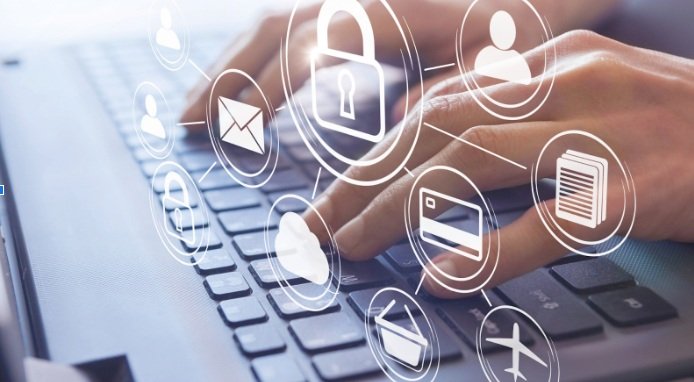Think about this for a moment: you send emails every single day, sharing everything from work documents to personal details. But what most people don’t realize is that these messages travel across multiple servers, often unprotected and vulnerable to interception. Every stop along the way is a potential doorway for hackers to access your private information.
That’s where secured email comes in. By adding layers of encryption and protection, it shields your conversations from prying eyes and ensures your data stays private. In this guide, we’ll explore how secured email works and why it’s essential for safeguarding your information.
Understanding Email Security Fundamentals
Let’s be honest – most of us have been treating email security like it’s someone else’s problem. But once you understand just how exposed your current setup really is, you’ll see why taking action isn’t optional anymore.
Picture this scenario: sending a regular email is basically like writing your most private thoughts on a postcard and dropping it in the mail. Everyone who handles that postcard – from postal workers to sorting facilities – can read every word you’ve written. That’s exactly what happens with standard email services.
Core Components of Secured Email Systems
Professional-grade secured email solutions work differently. They’re built on multiple protective layers that function like a sophisticated security system for your digital communications.
The foundation starts with end-to-end encryption, which essentially transforms your readable messages into scrambled code that looks like gibberish to anyone except your intended recipient. Authentication protocols act as digital bouncers, verifying that incoming messages actually come from legitimate senders rather than impostors trying to infiltrate your inbox.
Difference Between Standard and Encrypted Email Services
Here’s where the rubber meets the road. Your current email provider – whether it’s Gmail, Yahoo, or Outlook – leaves your messages completely naked during transmission and storage. Anyone with the proper access can read your conversations, see your attachments, and monitor your communication patterns.
Encrypted email services flip this equation entirely. They transform your readable text into complex mathematical puzzles that appear meaningless to unauthorized viewers. This means your banking information, medical records, and personal conversations stay genuinely private – not just hidden behind a weak privacy policy.
Common Email Vulnerabilities and Attack Vectors
Cybercriminals have gotten incredibly sophisticated at exploiting traditional email weaknesses. They use phishing attacks to trick you into revealing passwords, intercept messages during transmission, and even breach email servers to access stored communications. Some can modify your messages before they reach recipients, creating confusion and potentially damaging relationships.
These attack methods underscore why basic email services are insufficient to protect personal information effectively in today’s threat environment.
Advanced Encryption Technologies in Secure Communication
Now we’re getting into the technical backbone that makes truly secure email possible. Don’t worry – you don’t need a computer science degree to understand why these technologies matter for your privacy.
End-to-End Encryption Protocols (AES-256, PGP, S/MIME)
AES-256 encryption uses mathematical algorithms so sophisticated that even the world’s most powerful supercomputers would need millions of years to crack them. Seriously – we’re talking about protection that exceeds military-grade standards.
PGP and S/MIME protocols create unique digital keys for each user, like having a custom-made lock that only specific people can open. These technologies work in harmony to create secure communication channels that remain protected throughout the entire journey from sender to recipient.
Zero-Knowledge Architecture and Its Benefits
This concept might sound technical, but it’s actually beautifully simple in its implications for your privacy. Zero-knowledge systems mean that even the email service provider cannot access your decrypted messages – not even in the future.
Your data stays encrypted on their servers, and only you possess the keys to unlock it. This architecture provides complete privacy protection, even in the event of government requests, legal pressure, or security breaches.
Multi-Layer Protection Mechanisms
Think of modern secured email like a high-security building with multiple checkpoints. Each layer compensates for potential weaknesses in others, creating a redundant defense system that’s incredibly difficult to breach.
Two-Factor Authentication Integration
Two-factor authentication adds that crucial extra step beyond just entering your password. Typically, this involves receiving a code on your phone or using an authentication app to generate one-time codes.
This prevents unauthorized access even if someone manages to steal or guess your login credentials. Most professional secured email services now integrate this seamlessly into their platforms, making it painless for you while adding significant protection.
Advanced Threat Detection Systems
Modern AI-powered detection systems work like having a cybersecurity expert constantly monitoring your inbox. These systems analyze incoming messages for suspicious patterns, malicious links, and phishing attempts in real-time.
They learn from millions of threat examples to identify new attack methods before they can compromise your information. The best part? They work invisibly in the background, automatically filtering out dangerous content without interrupting your workflow.
Privacy Protection Features That Safeguard Personal Data
Beyond just blocking threats, professional secured email systems include specialized privacy features designed to keep your personal information completely anonymous and untraceable.
Interestingly, Europe maintains the highest inbox placement rate at approximately 91%, while Asia-Pacific shows the lowest at around 78% on average. This demonstrates how regional implementation significantly affects email security effectiveness across different markets.
Self-Destructing Messages and Expiration Controls
Many advanced secure email services offer messages that automatically delete themselves after predetermined time periods. This ensures that sensitive information doesn’t linger indefinitely in inboxes or on servers where it could eventually be compromised.
You can customize expiration times from minutes to months, depending on how sensitive the message content is. This feature proves particularly valuable for sharing confidential business information or personal details.
Metadata Stripping and Anonymous Routing
Professional secured email systems remove identifying information like IP addresses, device details, and location data from your messages. They route communications through encrypted networks that completely mask your digital footprint.
This makes it virtually impossible for anyone to trace messages back to your specific device, location, or identity – providing an extra layer of anonymity protection.
Implementation Best Practices for Maximum Protection
Understanding these security features helps you evaluate which providers actually deliver genuine protection, but proper implementation ensures you receive the full benefits these services are designed to provide.
Setting Up Your First Encrypted Email Account
Choose a provider with demonstrated expertise and transparent encryption standards. Look for services that offer straightforward setup processes without compromising essential security features.
Reputable providers guide you through initial configuration, helping you understand critical settings like encryption key management and backup recovery options. Don’t rush this process – proper setup pays dividends in long-term security.
Employee Training for Business Implementation
For business environments, employee awareness becomes absolutely critical for maintaining security standards organization-wide. Comprehensive training programs should cover recognizing phishing attempts, proper password management, and understanding when to use encrypted email for sensitive communications.
Regular refresher sessions keep security practices current as cyber threats continue evolving and becoming more sophisticated.
Common Questions About Secured Email Protection
1. Does encrypted email slow down message delivery?
Modern encrypted email services deliver messages just as quickly as standard email systems. Encryption processing happens instantly in the background without creating noticeable delays for users.
2. Can secured email services recover deleted messages?
Most zero-knowledge providers cannot recover deleted encrypted messages since they don’t store decryption keys on their systems. Always maintain personal backups of important communications.
3. How do secured email services handle spam and phishing attempts differently?
Secured email providers combine advanced AI detection with encryption protocols to identify and block malicious content before it reaches your inbox, offering significantly superior protection compared to standard email services.
Final Thoughts on Email Security Protection
Secured email represents your most important defense against an increasingly dangerous digital landscape where personal data theft affects millions of people every year. The sophisticated combination of encryption technologies, multi-layer protection systems, and privacy features creates comprehensive protection that traditional email simply cannot match.
Yes, the initial setup might seem complex compared to clicking “sign up” for a free email account. But consider this: the peace of mind that comes from knowing your sensitive information stays genuinely private makes every minute of setup effort worthwhile. Don’t wait until you become another data breach statistic – your personal information deserves protection that actually works.



